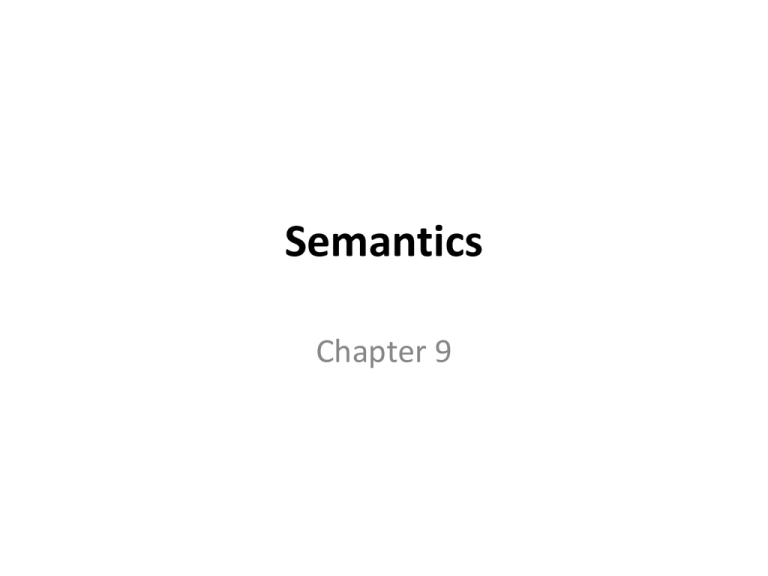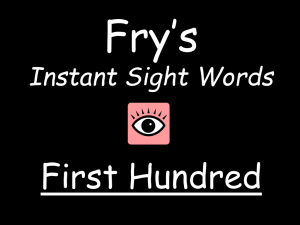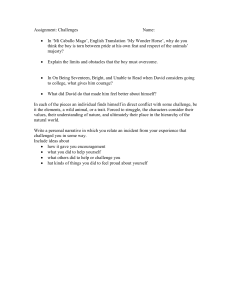ch 9 semantics
advertisement

Semantics Chapter 9 What is Semantics? Semantics is the study of the meaning of words, phrases and sentences. Semantic Roles 1. Agent The entity who does the action. Example The boy kicked the ball. 2. Theme The entity involved in or affected by the action. Example The boy kicked the ball. The dog chased the boy. 3. Instrument The entity that is used to do the action. Example The boy wrote the letter with a pen. 4. Experiencer The one who has the feeling, perception or state (not the action) described by the verb. Example The boy feels sad. The student knows the answer. 5. Location Where the entity is. Example the boy is sitting in the classroom. 6. Source Where the entity moves from. Example The boy ran from the house. 7. Goal Where the entity moves to. Example The boy walked to the window. Exercises Identify the semantic role of each underlined phrase. 1. A car ran over the ball. 2. The dog caught the ball. 3. We drove from Chicago to New Orleans. 4. Mary saw a fly on the wall. 5. She borrowed a magazine from George. 6. She squashed the bug with the magazine. 7. She handed the magazine back to George. Lexical Relations 1. Synonymy: two or more words have very closely related meanings. Examples: Big / large. Broad / wide. 2. Antonymy: words with opposite meanings. Examples: Happy/ sad. Hot / cold. 3. Homophones: two or more words with different forms and have the same sound. Examples: to/ too/ two. right/ write. Pragmatics Pragmatics: is the study of what speakers mean. Exercises Write the lexical relation of each pair listed below. 1. Male / female. 2. Cab / taxi. 3. Fast / slow. 4. Poor / rich. 5. freedom / liberty. 6. Meat / meet.



